THE ARK AND THE MOUNT OF JUSTICE
This article is really a chapter from the book King Of The Ark. You can read the book online here. You can also buy a printed version here.
In the Bible, Zion is repeatedly mentioned as the place of God’s justice and blessings. Today Mount Zion is the name given to a mountain next to, or south-west of, Mount Moriah, but most people do not realise that this is in fact a modern naming originating from the Middle Ages. The name Zion in biblical times referred
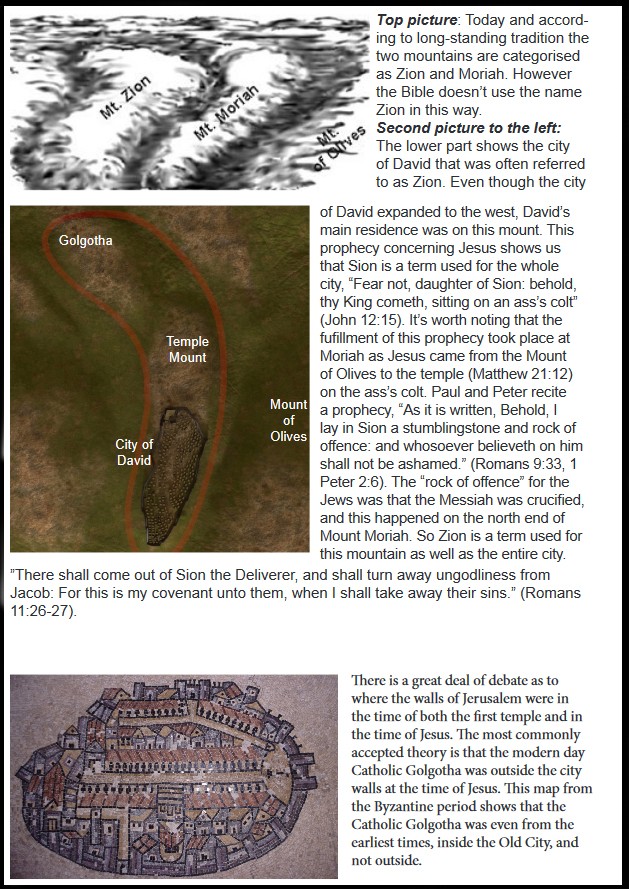 It is important to make the point that today we have two sites which both claim to be Golgotha. One is north of the city with a garden cared for by a British, Protestant association, while the other is on the western hill, where a large church is situated today. The old, originally Byzantine Church, has a church set up inside the city walls, to the west of the true Mount Zion, over what they claim is Golgotha, and thousands of pilgrims visit this place every year. It is here that
It is important to make the point that today we have two sites which both claim to be Golgotha. One is north of the city with a garden cared for by a British, Protestant association, while the other is on the western hill, where a large church is situated today. The old, originally Byzantine Church, has a church set up inside the city walls, to the west of the true Mount Zion, over what they claim is Golgotha, and thousands of pilgrims visit this place every year. It is here thatSo don’t trust that today’s modern name is not part of a religio-political agenda. The Bible itself specifically says Golgotha is outside the city gate. The remains of a wall were discovered close by this Golgotha which according to scolars supposedly placed it outside the city, but new “excavations by the GPIA during renovation work on the Church of the Redeemer in (1970-1974) however, showed that the wall was actually only the other boundary of a sanctuary for the Roman and Greek goddess Aphrodite dating to the Hadrianic period, over which Constantine built his Church of The Holy Sepulchre”. Digging a shaft underneath the church they discovered evidence of it having agriculture suggesting it was outside the wall.
The other problem is that ancient maps such as the old map of Jerusalem from the early Byzantine period (see picture on previous page), proves that the site of both the Catholic and Orthodox Golgotha was in fact inside the city wall. What’s more the “Via Dolorosa” walked by millions of pilgrims every year, did not even exist at the time this ancient map was drawn. Seeing as the map is from the early Christian era and from a church floor, if the ‘Via Dolorosa’ had existed it would have been of the utmost importance to include it. So this might prove that the idea of reverencing Christ’s route to the cross must have evolved at a later time. The Golgotha site north of the Temple Mount, outside the city, is where Ron Wyatt claimed to have found the crucifixion site and the Ark of the Covenant.
It was the same in the days of his son Solomon. “Then Solomon assembled the elders of Israel, and all the heads of the tribes, the chief of the fathers of the children of Israel, unto king Solomon in Jerusalem, that they might bring up the ark of the covenant of the LORD out of the city of David, which is Zion.” (1 Kings 8:1).
 Remember how God said He would reign from between the two cherubims of the Ark? So the Ark is moved from the city of David to the Temple Mount; but notice, the Ark hasn’t left the mountain. It is on the same mountain while the city of David is expanding to the west and the north. When Solomon built the temple on this peak above the city of David it means the city of David had started to extend northward. Zion now included this extended area. Again, it is still on the same mountain, so Mount Zion is still Zion. Don’t let politics or archeologists fool you. Trust the Bible. If Zion was now on the west of the city of David (or north-west), the name would have been completely switched from one mountain to another. The term Zion is also representative of God’s dwelling place in the temple, “In Salem also is his tabernacle, and his dwelling place in Zion.” (Psalm 76:2). Later it’s just called the holy mountain, “Thus saith the LORD; I am returned unto Zion, and will dwell in the midst of Jerusalem: and Jerusalem shall be called a city of truth; and the mountain of the LORD of hosts the holy mountain.” (Zech 8:3). This was at the beginning of the second temple period, so in the Bible the temple site is also called Zion. Remember, sometimes Zion refers to the city of David, other times in reference to God’s special mountain it is the Temple Mount where the Lord ruled from, and yet other times it is used for the entire city. So here we learn two things; firstly that God dwells between the two cherubims over the Ark of the Covenant in the sanctuary, where He revealed Himself in the first temple during the reign of King Solomon. Secondly that the mountain He reigns from is called Zion – and the Bible says God reigned from where the Ark was situated. Now the Bible indicates that God’s dwelling place upon the Ark, would be on Zion forever, “For the LORD hath chosen Zion; he hath desired it for his habitation. This is my rest for ever: here will I dwell; for I have desired it” (Psalm 132:13).
Remember how God said He would reign from between the two cherubims of the Ark? So the Ark is moved from the city of David to the Temple Mount; but notice, the Ark hasn’t left the mountain. It is on the same mountain while the city of David is expanding to the west and the north. When Solomon built the temple on this peak above the city of David it means the city of David had started to extend northward. Zion now included this extended area. Again, it is still on the same mountain, so Mount Zion is still Zion. Don’t let politics or archeologists fool you. Trust the Bible. If Zion was now on the west of the city of David (or north-west), the name would have been completely switched from one mountain to another. The term Zion is also representative of God’s dwelling place in the temple, “In Salem also is his tabernacle, and his dwelling place in Zion.” (Psalm 76:2). Later it’s just called the holy mountain, “Thus saith the LORD; I am returned unto Zion, and will dwell in the midst of Jerusalem: and Jerusalem shall be called a city of truth; and the mountain of the LORD of hosts the holy mountain.” (Zech 8:3). This was at the beginning of the second temple period, so in the Bible the temple site is also called Zion. Remember, sometimes Zion refers to the city of David, other times in reference to God’s special mountain it is the Temple Mount where the Lord ruled from, and yet other times it is used for the entire city. So here we learn two things; firstly that God dwells between the two cherubims over the Ark of the Covenant in the sanctuary, where He revealed Himself in the first temple during the reign of King Solomon. Secondly that the mountain He reigns from is called Zion – and the Bible says God reigned from where the Ark was situated. Now the Bible indicates that God’s dwelling place upon the Ark, would be on Zion forever, “For the LORD hath chosen Zion; he hath desired it for his habitation. This is my rest for ever: here will I dwell; for I have desired it” (Psalm 132:13).
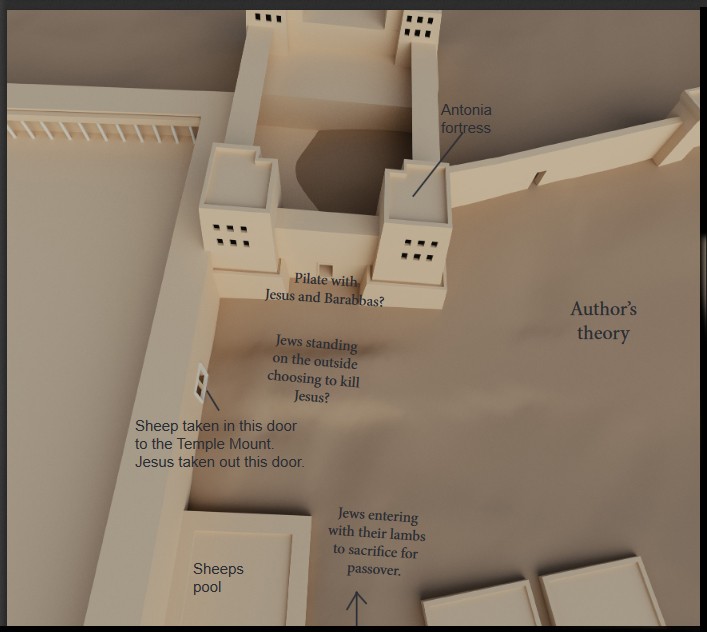 through the rear of the fortress? If they led Him out the rear of the fortress, Yeshua was actually taken out
through the rear of the fortress? If they led Him out the rear of the fortress, Yeshua was actually taken outHowever, while they waited outside the fortress they aroused a great deal of attention, and the crowd grew rapidly. Yeshua was first taken to Pilate, then sent to Herod’s and then back to
So the Bible indicates a countryside scene rather than city streets, which again places us on the eastern side of the Antonio fortress. This gate on the east side is known as Lion’s Gate today, but used to be called the Sheep Gate, and the end of Golgotha is north-west of this gate. Having been taken to Skull Hill, under the highest peak on Moriah, Christ is crucified. This was a highly visible place with a busy, main road passing between the city walls and Skull Hill, making it a place where the crucifixion could serve as an example to the people.
As you may well know, the special characteristic of Melchizedek was that he was both priest and king at the same time in Jerusalem, and this is why Yeshua is prophesied to be after the order of Melchizedek; instituted as both Priest and King in Jerusalem. “The LORD shall bless thee out of Zion: and thou shalt see the good of Jerusalem all the days of thy life.” (Psalm 128:5).
“Remember thy congregation, which thou hast purchased of old; the rod of thine inheritance, which thou hast redeemed; this mount Zion, wherein thou hast dwelt.” (Psalm 74:2). “Out of Zion, the perfection of beauty, God hath shined… He shall call to the heavens from above, and to the earth, that he may judge his people. Gather my saints together unto me; those that have made a covenant with me by sacrifice. And the heavens shall declare his righteousness: for God is judge himself. Selah” (Psalm 50:2-6). Could God’s work be fulfilled on the northern section of the mount that had been cut off from the rest of the mountain? In the next chapter we will look at certain Scriptures that reveal why it happened outside the city walls, on the part of the mountain which was cut off.

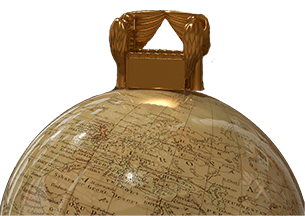


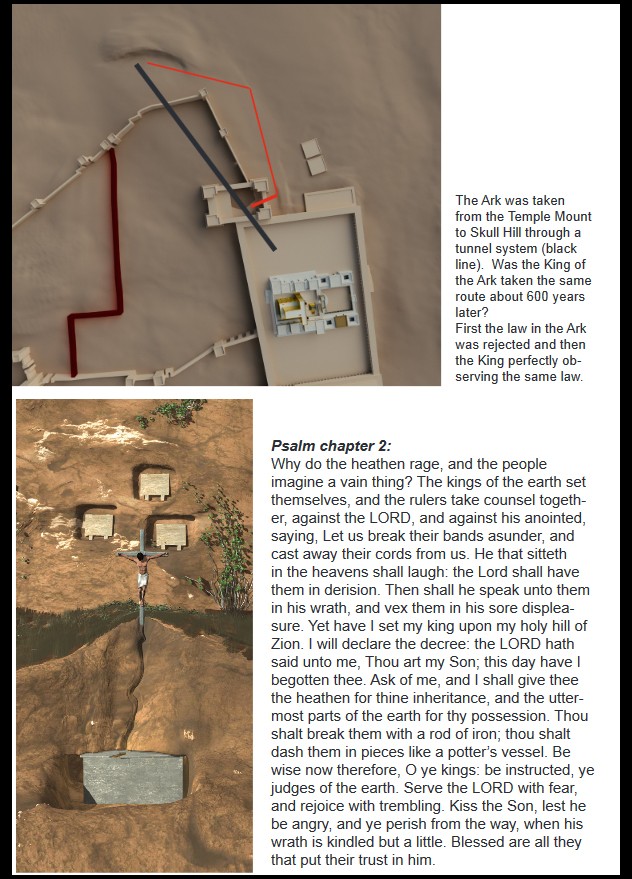
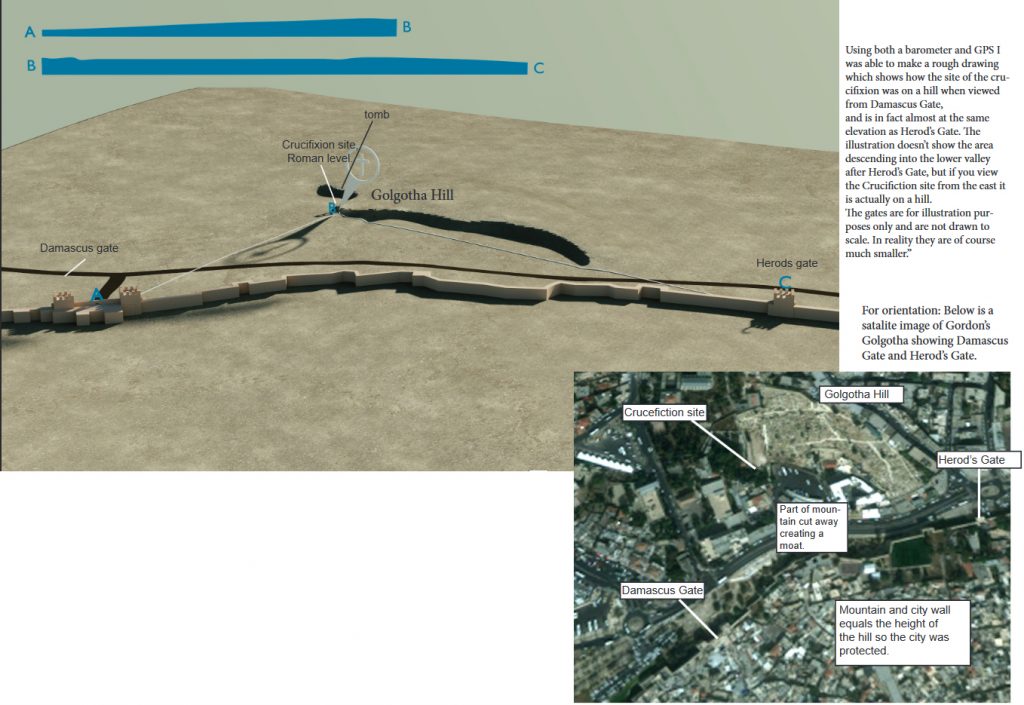
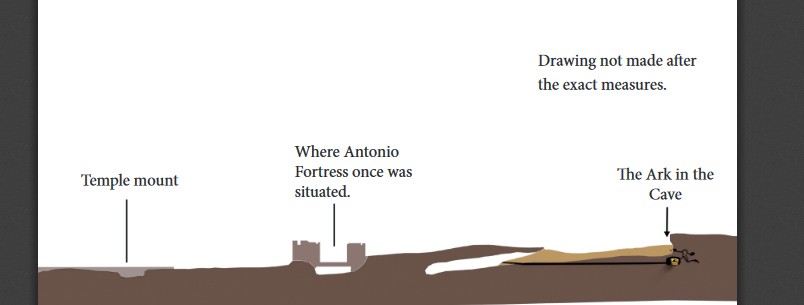
Recent Comments